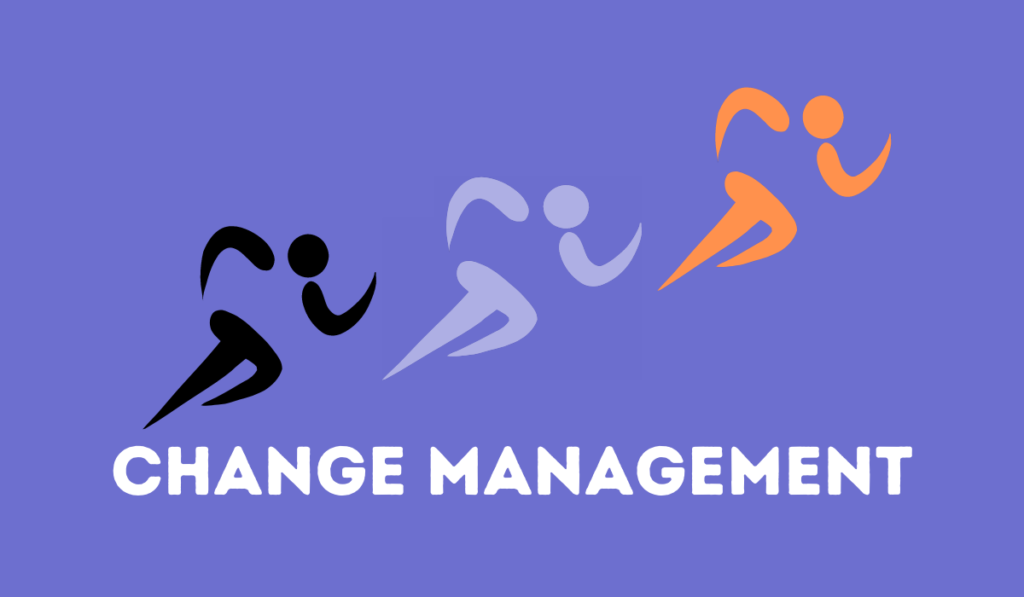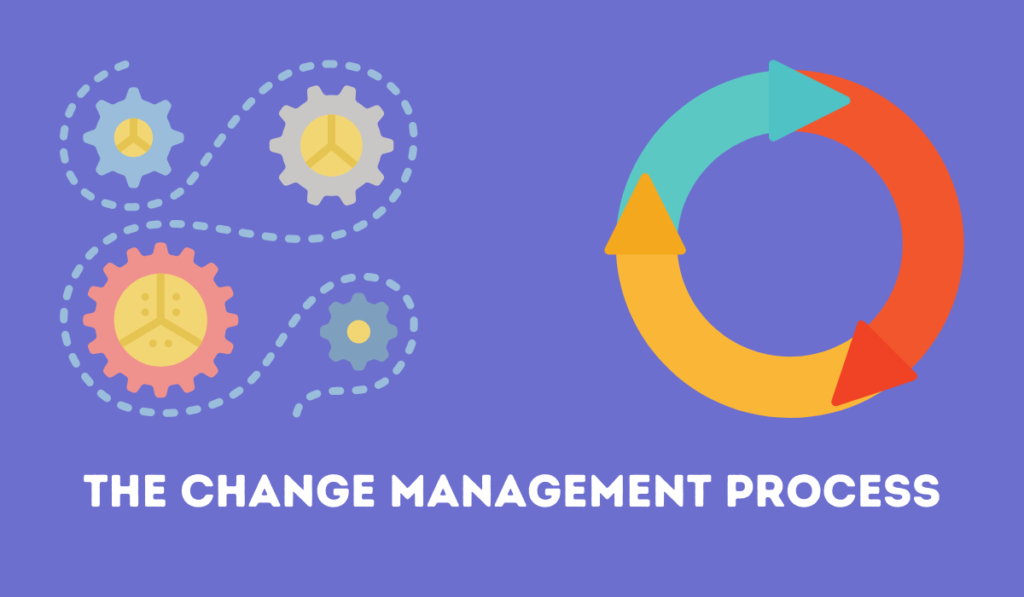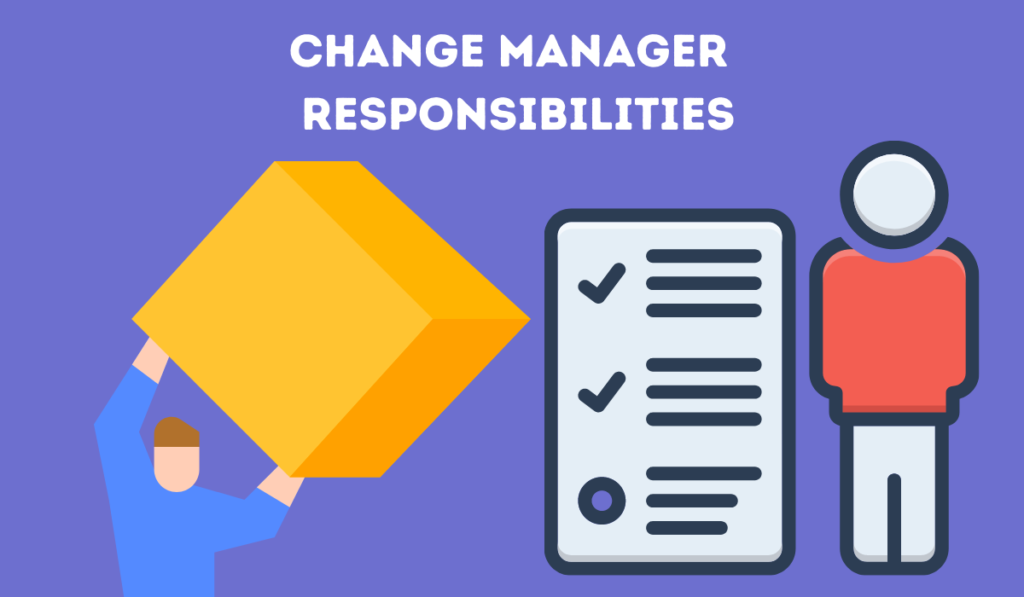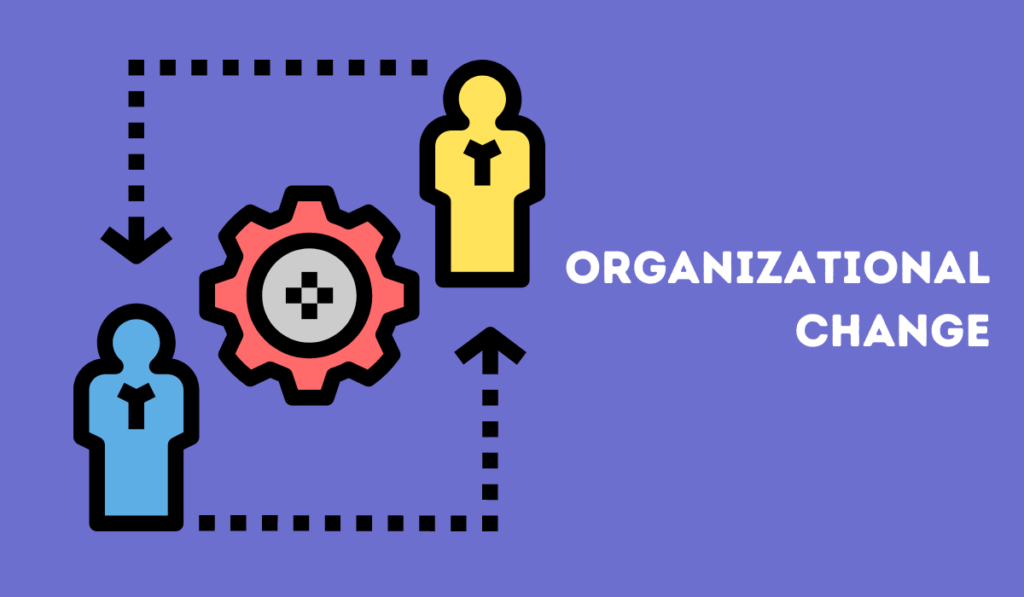Change Management: The Impact on Organizations


“The world is changing very fast. Big will not beat small anymore. It will be the fast beating the slow. “Rupert Murdoch, Change Management Review.
Life is a series of changes. It can be exciting, new, and full of possibilities—or it can be scary, uncomfortable, and unknown.
Change can have both good and bad consequences for organizations. How an organization handles change will determine its success or failure.
This blog post will discuss the impact change management has on organizations. We will look at the benefits and challenges of change management, and provide tips on successfully navigating through changes in your organization!
Why Change Management?

There are many reasons why an organization might need change management. Some common causes include:
A change in leadership
This could be due to a change in the CEO, CFO, or other key leaders. When there is a change in leadership, it can often mean that the organization is changing in direction or strategy.
A change in business model
The company might be expanding into new markets, pivoting to a new business model, or merging with another company. Any time there is a significant change to the way the business operates, change management will be needed.
A crisis situation
Assume the firm is in financial difficulty, has been impacted by a natural disaster, or has stolen its data. The company should set up change management processes to quickly adapt when needed.
A change in strategy
This could be in response to changes in the industry, the economy, or customer needs. The organization may be shifting its focus, goals, or target market.
A change in technology
Implementing new technology often requires changes in processes or procedures. In order to work remotely, employees need to be able to access the tools and resources they need from anywhere. This includes having access to a computer and the internet, as well as any necessary software or files. Make sure employees have training on the new technology
Change management ensures all technology changes work in a smooth and efficient manner.
A change in a company culture

There are many factors that can contribute to a change in a company’s culture. Some of the most common reasons include a change in ownership, a merger or acquisition, a change in management, or a change in business strategy. When there is a change in any of these elements, it can often cause a ripple effect throughout the entire organization.
Refer to business research for business leaders of Harvard Business School, to change your company’s culture, don’t start by trying to change the culture…
Downsizing or restructuring
When a company undergoes downsizing or restructuring, change management is essential in order to minimize the negative impact on the organization. Downsizing or restructuring can be very disruptive for employees and can lead to feelings of uncertainty and insecurity.
Mergers and acquisitions
When a company undergoes a merger or an acquisition, it experiences change. The transition should go smoothly and the company should achieve its goals.
There are a few key steps in change management for mergers and acquisitions. The first step is to assess the situation and identify what needs to be changed.
The change plan should be tailored to the specific situation and should consider the resources that are available. Finally, change management needs during implementation and monitoring the transition to ensure that it is effective.
Changes in the external environment
Economic conditions, new regulations, or other factors outside of the organization’s control can cause change.
Types of Change Management

There are different change management, each with its own advantages and disadvantages. The most common type of change management is top-down.
Top-Down Change
The top levels of the organization start the change initiative and then it spreads down to the lower levels. This type of change can be effective in ensuring that all employees are on board with the changes and that everyone understands the company’s new direction.
However, top-down change management may lead to resistance from employees who feel they have no input in the decision-making process.
Bottom-Up Change
The bottom levels of the organization start to propose changes. Bottom-up change is more participative and can often lead to greater employee buy-in. However, it can also be more difficult to implement and may take longer to achieve results.
The use of change management will depend on the specific situation and what is most likely to be successful in order to achieve the change.
Get more out of your business
Get the best employee engagement content every week via mailing list
The Change Management Process

Change management is the process of planning, implementing, and monitoring changes to the business. It includes identifying the need for change, assessing the risks and benefits of change, developing a change plan, implementing the change plan, and monitoring the change.
The change management process helps ensure changes are running in a safe and controlled way. It also helps to ensure that the changes are actually beneficial to the organization and that they don’t have any negative consequences.
The change process is a little more complicated than just getting rid of old habits. It typically involves the following steps:
1.Establishing the need for change
This step involves identifying a problem or opportunity that needs to be addressed. The problem or opportunity might be identified by senior leaders within the organization, by employees, or by outside stakeholders.
2. Assessing the risks and benefits of change
In order to change in a safe and controlled way, it is important to assess the risks and benefits of change. This involves looking at the potential risks and benefits of making a change and weighing them against each other.
The risks of change include things like loss of revenue, loss of jobs, or even bankruptcy. The benefits of change include things like increased efficiency, improved customer service, or increased profits.
It is important to weigh the risks and benefits of change carefully before making a decision. This will help to ensure that the changes are actually beneficial to the organization.
3. Developing a change management plan
The change management team will develop a change plan once it is clear that a change is needed. They will identify the risks and benefits of the change and then create a plan, including what the change will be, when it will happen, what resources are needed, and how it will be carried out.
The change plan should be tailored to the specific situation and should take into account the resources that are available. The timeframe should be realistic to achieve the goal.
The change plan should also identify who will be responsible for each stage of the change process. This will help to ensure that everyone knows their role and responsibilities.
All parties involved get all the information about the change plan. This includes employees, suppliers, customers, and other stakeholders.
4. Implementing the change plan
The implementation stage is when the plan really starts to take shape. This means gathering data, analyzing results and making decisions based on what you find out about your employees’ needs as well as how they interact with one another in order for them all be successful at work every day! This typically involves putting the change in place and monitoring how it is working.
The change process will continue even after the changes’ implementation. This includes monitoring the change over time and making changes if necessary.
5. Monitoring the change
Once a change has been made, it is important to keep an eye on the situation and make any necessary adjustments. This includes tracking things like revenue, profits, customer satisfaction, and employee satisfaction.
Managing change quickly and effectively can help organizations avoid any negative impacts on their productivity or operations after the changes’ implementation.
The change management process ensures that the implementation of changes is working in a safe and controlled way. It also helps to ensure that the changes are actually beneficial to the organization and that they don’t have any negative consequences.
The Benefits of Change Management

There are many benefits to change management, including:
Improved communication and collaboration between employees
Improved communication and collaboration between employees is one of the major benefits of change management. This can help to ensure that everyone agrees and that they are working towards the same goal.
Improved communication can also help to reduce conflict between employees and can improve team morale.
Collaboration between employees can also lead to new and innovative ideas. This can help to improve the organization and can help it stay competitive in the market.
Increased employee productivity and job satisfaction
Employees who participate in the change process are more likely to be productive and satisfied with their jobs. They will feel like they are a part of the change, and they will be more likely to support it.
Employees who are not actively involved in the change process may feel left out or may resist the change. This can lead to decreased productivity and job satisfaction.
Change management helps ensure employees are included in the process and understand what is happening.
Reduced stress levels and fewer workplace accidents
The change management process can help to reduce stress levels and minimize the number of workplace accidents. This is because change management helps to ensure that changes are made in a safe and controlled way.
Employees are more likely to be anxious if they believe their employers are forcing them to alter their work without providing any input or control. Change management allows employees to have a say in the change process and gives them a sense of ownership. This can help to reduce stress levels and prevent workplace accidents.
Better decision making due to streamlined processes
One of the major benefits of change management is that it helps to ensure that changes are made in a safe and controlled way. This can help to improve decision-making in organizations.
It can lead to confusion if changes are made in an unsystematic manner. This can make it difficult to make decisions and can cause problems for the organization.
Change management helps to ensure that changes are made in a coordinated way. This can help to improve communication between employees and can lead to better decision-making.
Streamlined processes can also help to improve decision-making. This is because when processes are streamlined, everyone may understand what’s going on more easily. This can reduce confusion and help to ensure that decisions are made in a timely manner.
These benefits help to ensure that the organization runs smoothly during times of change. They also help to improve employee morale and create a more positive work environment.
A well-managed change process can help an organization thrive during difficult times!
The Challenges of Change Management

Change management can be difficult for a number of reasons. Some of the challenges that change management can pose include:
Lack of employee engagement
If employees don’t feel involved in the change process, they may resist the change. This can lead to decreased productivity and job satisfaction.
Employees who engage in change are more likely to be productive and satisfied with their jobs. They will feel like they are a part of the change, and they will be more likely to support it.
Change management helps ensure employees are included in the process and understand what is happening. This can help to increase employee productivity and job satisfaction.
Employee engagement and collaboration are primary factors contributing to successful organizations becoming more important during change implementation” ~ Peter F Gallagher, Change Management Global Thought Leader.
Resistance to change
One of the challenges of change management is when people don’t want to change. This can happen when employees don’t feel like they are a part of the change process or when they don’t understand what is happening.
When people resist change, it can lead to decreased productivity and job satisfaction. It can also cause problems for the organization. Change management minimizes the chances of unintentional or incorrect changes, allowing you to ensure that everyone is aware of the change.
A Manager’s Role in Organizational Change

In change management, a manager’s duty is to assist with the safe and controlled introduction of changes. The manager makes sure that all necessary changes are made and that employees are involved.
Managers should also be sure to communicate with employees about changes and to provide support during times of change. Change can be difficult, but with the right support, it can be managed successfully.
If you are a manager, change management should be one of your top priorities. You can also help to prevent problems for the organization. Change management is essential for any organization that wants to thrive during times of change!
Change Manager Responsibilities

A change manager is responsible for pushing change initiatives, setting change objectives, and measuring achievements.
But a change manager’s role doesn’t stop there.
They are also responsible for developing change plans, which detail how the change will be implemented. The change management plan should include timelines, budgets, and resources needed.
The change manager ensures that the change management plan is followed and that the objectives are met. They will also need to communicate with stakeholders throughout the process to ensure that everyone is on board with the changes.
Change managers need to have strong organizational skills and be able to think on their feet. They must be able to adapt to changes as they happen and be able to make quick decisions.
While change management can be challenging, it is a very important role in any organization. Change management professionals may help increase employee productivity and job satisfaction by continually monitoring and implementing improvements. They can also help to prevent problems for the organization. Change management is essential for any organization that wants to thrive during times of change!
Preparing for Organizational Change

The change management process begins with the preparation for change. This is when the change manager and team develop the change management plan.
Change Management Plan
The change management plan explains the procedure for carrying out the change and provides the necessary resources. The change manager will work with the team to develop a plan that meets the objectives of the change. A change management plan includes the following:
- The objective of the change
- How the change will be implemented
- What resources are needed?
- Any risks associated with the change?
Developing the Skills You Need to Manage Organizational Change

You need to change your skills and the way you work, think, and behave, if you want to change the organization. You can change what you do and how you do it, but if you don’t change who you are, nothing will change.
There are three steps in changing yourself so that you can change the organization:
Understand your own reactions to change
You need to understand how you react to change before you can manage it effectively. When something new happens, do you jump into action or do you take a step back? Do you like changes or does every new thing make you anxious? Knowing how change affects you will help when developing your change management plan.
Get rid of your assumptions about change
We often have preconceived notions about change that may not be accurate. We may think change is hard or that it takes a long time, but these assumptions may not be true. To manage change effectively, you need to get rid of your preconceived notions and start fresh
Create a change management plan
Once you understand how change affects you and what your assumptions about change are, you can begin creating a change management plan. This plan will outline how you will manage changes in the organization and what steps you will take to ensure a successful transition. Having this plan in place will help reduce anxiety and make the change process smoother for everyone involved.
When it comes to managing organizational change, having the right skills is essential. By understanding how change affects you and developing a solid change management plan, you can make changes that will benefit the organization and its employees.
Use change management principles to develop the skills you need to manage organizational change effectively. By understanding how change affects you and getting rid of your preconceived notions about change, you can develop a change management plan that will help the organization transition smoothly to the new changes.
Once you have accomplished this, you can begin creating a change management plan that outlines how you will manage changes in the organization.
Understanding Impact in Change Management
Change management is more than just guiding an organization through transitions; it’s about understanding and measuring the effects of those changes. In this context, the term “impact” refers to the tangible and intangible consequences that result from implementing change. But what exactly does “impact” mean, and how is it distinct from other concepts like outcomes? Let’s dive deeper.
Distinguishing Between Impact and Outcomes
While “impact” and “outcomes” are often used interchangeably, they are not the same. Outcomes are the immediate results that follow the implementation of a change—these are measurable and often planned. For example, an outcome might be the successful adoption of new software across a company. Impact, on the other hand, refers to the broader, long-term effects of that outcome. It encompasses both the positive and negative repercussions that emerge over time, such as improved productivity or, conversely, employee burnout due to increased workloads.
The Challenges of Predicting Impact
One of the most difficult aspects of change management is forecasting its impact. Predicting how a change will affect various aspects of an organization—such as employee morale, customer satisfaction, or operational efficiency—is complex. This difficulty arises because impact is influenced by numerous variables, including organizational culture, external market conditions, and individual responses to change. Even with thorough planning and analysis, unforeseen consequences can arise, making impact prediction more of an art than a science.
The Importance of Grasping the Impact of Change Management
Why is it so crucial to understand the impact of change management? Because the success of any change initiative depends not just on achieving the desired outcomes, but also on managing the impact effectively. If you don’t fully grasp the broader effects of the changes you’re implementing, you risk unintended consequences that could undermine your efforts. Understanding impact allows you to plan more effectively, mitigate risks, and ensure that the changes bring about sustainable, positive results for the organization.
Frequently Ask Questions (FAQ)
Which Leadership Style Is Best for Change Management?

While there is no one-size-fits-all answer to this question, it’s important to choose a style that will work well for both the change and the organization.
In most cases, change management requires a transformational leader who can inspire employees to buy into the new vision and direction. However, in some cases, a directive leadership style may be more appropriate. It’s important to tailor the approach to fit the situation and ensure that the change is successful.
Some of the key factors that will influence which leadership style is the best to include:
- The size of the organization
- The culture of the organization
- The type of change being implemented
- The level of employee engagement
Each of these factors will impact the way change is managed and the type of leader who is best suited to lead it.
Why is change management difficult?

Change management is difficult because it involves changing people’s behavior. And people are complicated, with a multitude of variables, from the tangible to the intangible, that can impact their behavior.
The first dimension of change relates to the power or authority relationship between those in an organization or community directing change and those impacted by the change.
The second dimension, complexity, covers challenges related to understanding change initiatives – which involve analyzing all aspects (structural, personal) involved in order to identify potential effects. These challenges include our cultural bias with quick fixes; motivational inhibitors due-to fear of someone losing their job; difficulty in breaking bad habits that may need to be changed; a lack of validation for desirable behaviors.
Finally, there are addictive fears that block change – the fear of change itself. This is often caused by a traumatic change event in the past which has made us leery of anything new. We become risk-averse and set in our ways.
All these dimensions must be considered when attempting change management within an organization or community – as they will all have an impact on the success or failure of the initiative.
When is organizational change management needed?

Organizational change management is needed when a change in an organization may create confusion, disruption, or resistance.
Organizational change management can be necessary for a variety of factors including a faulty business strategy, new company leadership (e.g., merger or acquisition), lack of continued success within the company, and many more.
In other words, change management is necessary if the change appears to create confusion, disruption, and/or resistance among employees.
Organizational change may occur deliberately because it’s required to evolve with changes in the external environment; as a result, organizational change may take place gradually as part of an overall process of evolution because it’s accomplished according to predetermined objectives and goals that describe how organizational change will occur within designated time frames with specific results achieved through change.
Organizational change management is the process of planning, implementing, and monitoring changes in organizations. It helps ensure that changes are made in a controlled and coordinated manner.
When organizational change management is needed, there are a few key steps that should be taken in order to ensure successful change:
- Properly communicate the change to all employees
- Train employees on the new processes or procedures
- Create a plan for implementing the change
- Monitor the progress of the change implementation
- Adjust
Conclusion
Change management is critical to the success of any organization. Having a plan helps make sure changes happen in a coordinated way that helps an organization achieve its goals without too many disruptions. This can help get employees more involved in the process.
The goal of change management in this situation is to help employees understand why the changes are happening and to ensure that they can adapt as quickly as possible. This will help them feel more comfortable with the changes and make the transition easier. Change management will also help to ensure that the company remains productive and profitable during this time of change.


